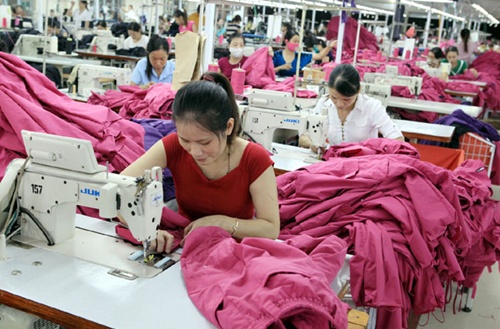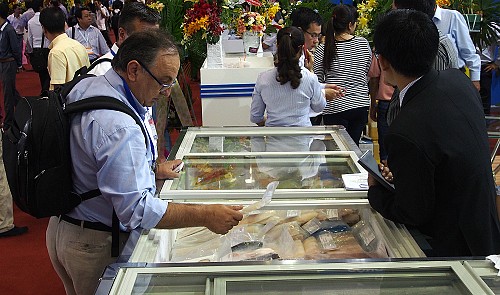Eurasian trade deal promising
Eurasian trade deal promising
The Vietnam-Eurasian Economic Union Free Trade Agreement signed on May 29 is expected to offer ample opportunities and tough challenges to Vietnamese businesses.

According to the agreement, Vietnam will have great opportunities to sell strong products to the Eurasian Economic Union (EEU), encompassing Russia, Belarus, Kazakhstan, Armenia, and Kyrgyzstan. Aquatic products, garments, and leather will be the key beneficiaries of the deal as they enjoy zero per cent tariff.
Dang Phuong Dung, Vice President and Secretary General of the Vietnam Textile Association (VITAS), said that before signing the free trade pact with the EEU, Viet Nam had an average export value of about US$17 million in garment products to each member countries of the union, accounting for 2 per cent of the total national export value of textile and garment, partly due to high tax rates for imported garments to the countries.
Dung is upbeat about Vietnamese textile and garments' market share in the union after the pact, predicting that the two-way garment trade will grow by 50 percent in the first year of the agreement's implementation and 20 percent over the next five years, Vietnam News Agency reports.
Viet Nam would become the union's fourth biggest provider of apparel from the current eighth place, she said.
Thanks to the signing of free trade deals between Viet Nam and South Korea, the EEU and the EU, a wave of foreign capital had entered the garment and textile sector from the outset of this year, broadening opportunities for Vietnamese products, she added.
Dung remarked that the agreements would create favourable conditions for Vietnamese enterprises and products to approach foreign markets and enhance trade promotion activities, and enterprises could gain good results right now. They would need time to approach markets and reach agreements with their foreign partners.
As for enterprises in the textile and garment industry, they also need to make efforts to increase their competitiveness.
On the contrary, the deal would bring major competition to the Vietnamese steel sector as Russian steel had low production costs and high quality, said Nguyen Van Sua, Vice Chairman of the Viet Nam Steel Association.
Each year, Russia produces 70 million tonnes of steel using advanced technologies. Each tonne of steel billet produced in Russia costs 50 kilowatt hours of power, while Vietnam consumes 10 times more to produce the same.
Furthermore, most Vietnamese steel enterprises are small-scale operations and lack the backing of advanced technologies.
Sua suggested that Vietnamese enterprises need to expand knowledge of international trade, and the Government should deploy legal trade tools to protect and support local steel production.
Pham Chi Cuong, former chairman of the association, said only large steel producers that have the ability to export their steel products would have the advantage of price, market, and capital to acquire competitive ability after the FTA. The number of local large steel producers was not many.
Phan Dao Vu, a representative of the Viet Nam-Australia Steel Company, said local steel producers would face many challenges following the FTAs, especially in a situation of non-recovery in the local real estate market and a slight increase in demand on the home market.
Domestic steel makers would have difficulties selling their products due to competition from the member countries of the union after the Viet Nam-EEU FTA, he observed.



















